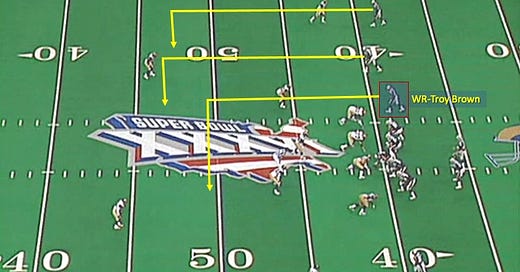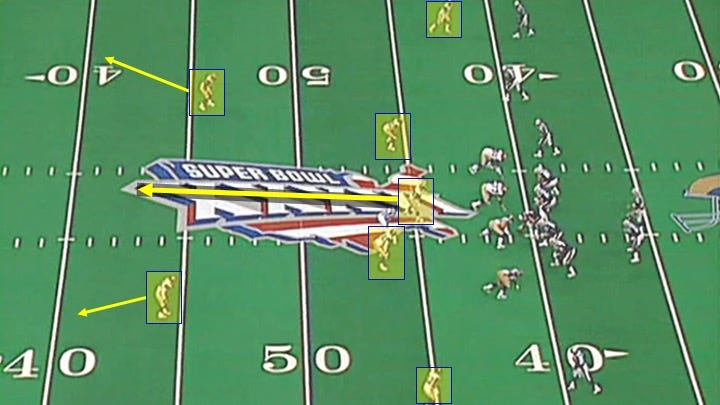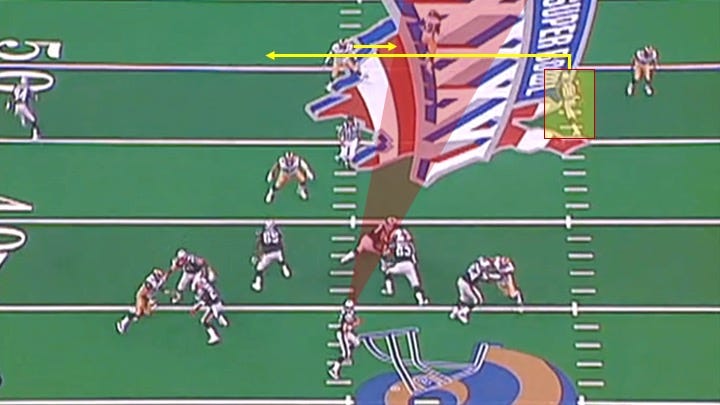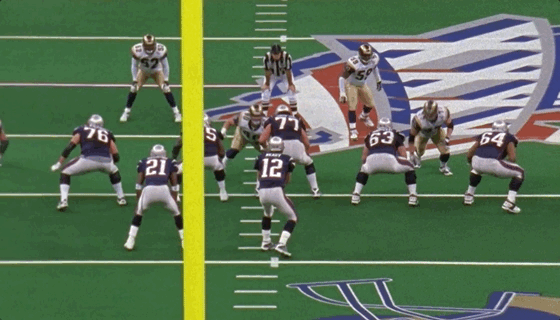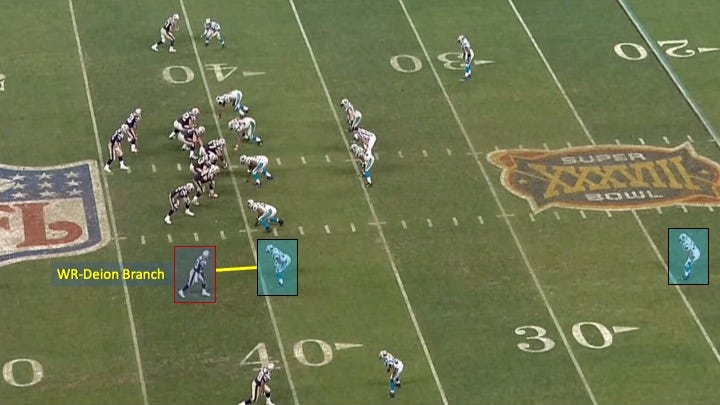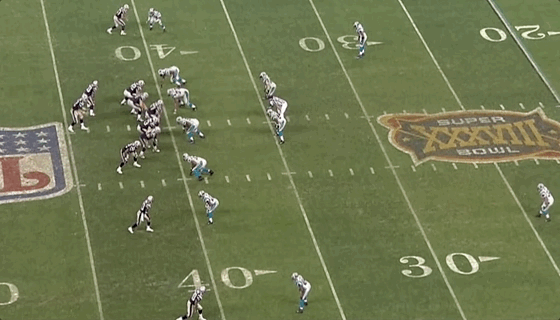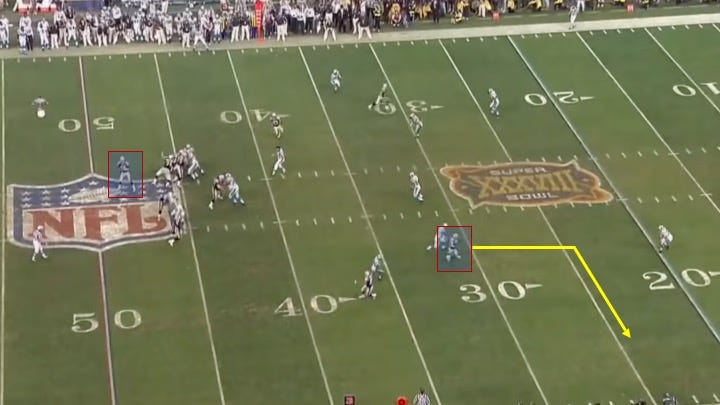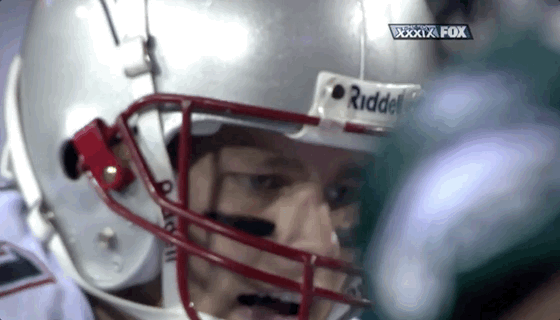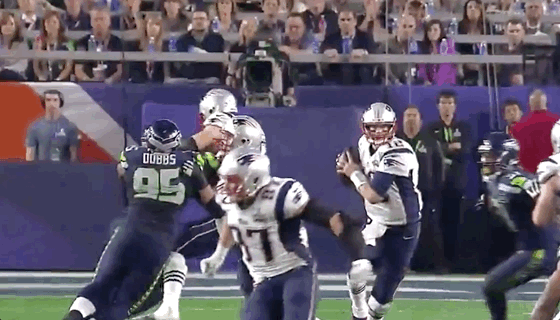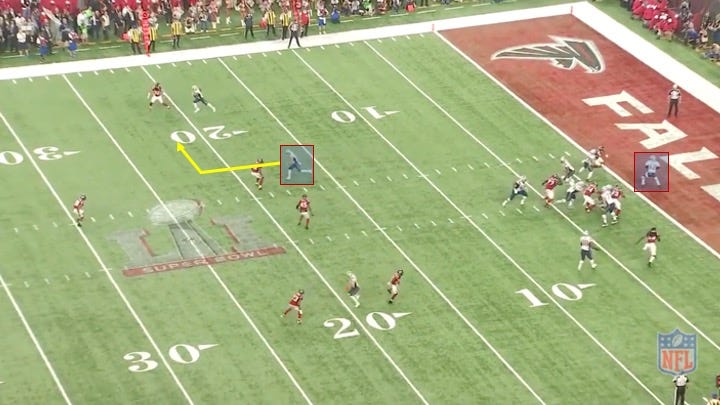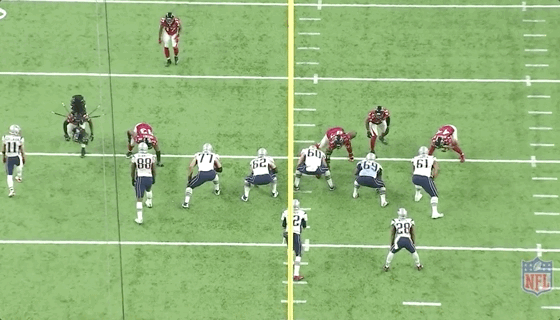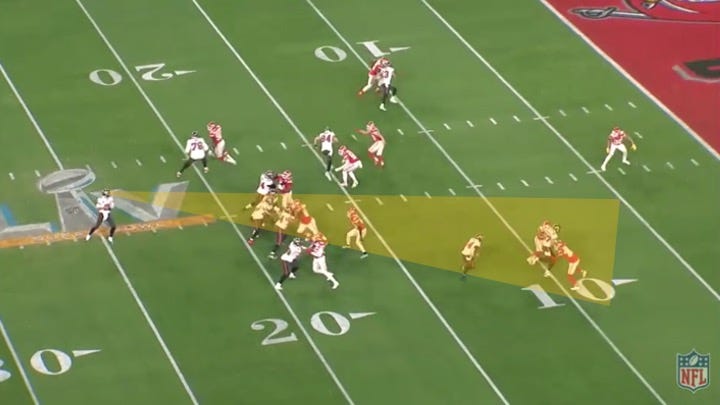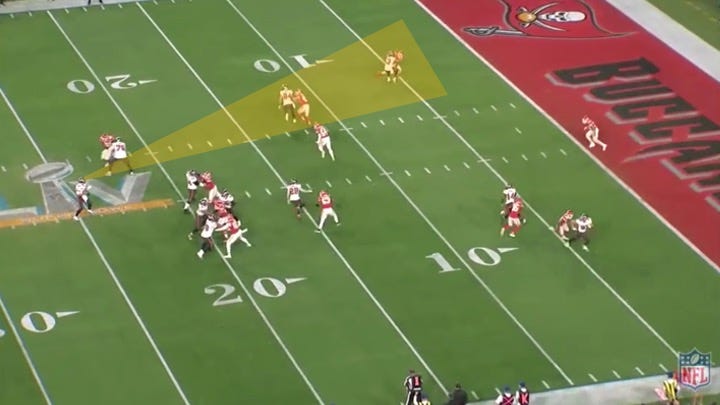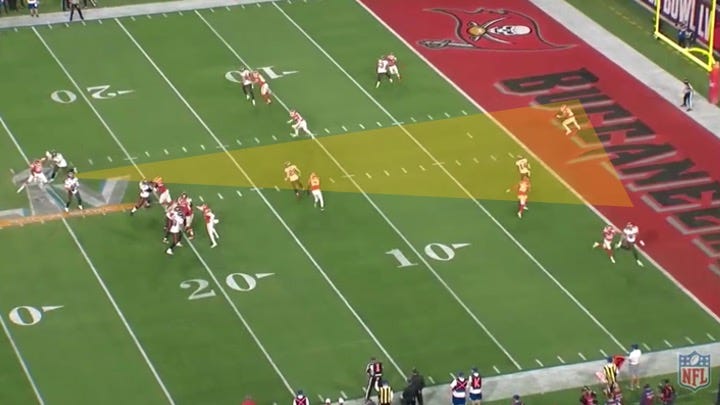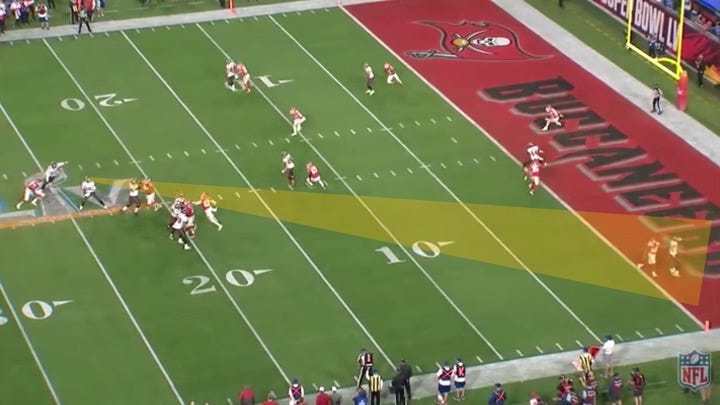The 7 Plays From Tom Brady's Super Bowl Victories That Defined Him as a Quarterback
Tom Brady called it quits after 22 years and a career that was undoubtedly the most accomplished in NFL history. We all have our opinions on what made him such a great quarterback. To me, it was the fact that he was the same player in those big moments as he was on any random 2nd down in the first quarter of a less-meaningful Week 3 game. He relied on consistent and repeatable traits that served him well regardless of the situation.
Below, you can see those traits on display in the biggest moments of Brady’s career. These 7 plays were not only critical to the outcome in each of his Super Bowl wins, but they also happened to define who he was as a quarterback.
Super Bowl XXXVI (Patriots 20, Rams 17)
Before Tom Brady was Tom Brady, he was on a Patriots team in Super Bowl XXXVI that was tied with the Rams and had only 29 seconds remaining on the clock. On this play, the Rams would drop into Tampa-2 zone coverage and rush 3:
The Patriots had an “All-In” concept called, with Troy Brown as the #3 inside receiver:
As Brady dropped back, he would notice middle linebacker London Fletcher opening to the 3-receiver side and climbing the inside vertical seam. That pretty much meant the #2 in-breaking route was dead:
Brady didn’t wait long to move off of that receiver and turn his attention toward Brown. As he looked right to read Fletcher after the snap, that influenced linebacker Tommy Polley to move right toward the 3-receiver side as well. This created a huge window for Brown to run into:
While there wasn’t a ton of pressure, Brady felt the rush coming from his right. As he would go on to do so often throughout his career, he moved within the pocket to give himself time and space to throw, quickly reset his feet, and delivered an accurate pass with ease:
3 plays later, Adam Vinatieri kicked the Patriots to their first of 6 Lombardi Trophies.
Super Bowl XXXVIII (Patriots 32, Panthers 29)
Deja vu all over again as the Patriots were tied at the end of Super Bowl XXXVIII against the Panthers with just 14 seconds remaining. Brady would end up targeting Deion Branch in the slot to his right. To that side of the formation, Carolina was playing 2-man (man coverage underneath with safety help over the top):
Brady saw the coverage, quickly understood that it was designed to take away inside and underneath throws, and then delivered a perfect strike to Branch running a deep out from the slot:
I remember watching this game and thinking, “How could they leave Branch wide open like that?!” The reality was that it only seemed like Branch was wide open on the broadcast angle because Brady threw this pass with such great anticipation. That gave Branch’s defender and the deep safety to his side little opportunity to make a play on the ball.
Below, you can see where Branch was in his route when Brady made his decision to throw and had just started his motion:
It isn’t flashy, but the ability to anticipate is what separates the good from the great quarterbacks. Brady put that ability into action in the biggest of moments here, as he would often throughout his career.
Super Bowl XXXIX (Patriots 24, Eagles 21)
This Super Bowl ended up being a little less dramatic than the previous two, despite the identical 3-point differential in the final score. That said, Brady’s biggest play arguably came at the end of the first half. The Patriots had gone nearly 30 minutes without scoring and trailed the Eagles 7-0.
As we would all see for the next 17 years of his career, Brady was able to quickly work through all of his reads and manage to find the open receiver:
Just look at this close-up of Brady’s eyes. He looked left, then to the #3 inside slot receiver to his right, then to the #2 inside receiver, and then to David Givens all the way on the outside:
Truth be told, Givens likely wasn’t supposed to be a realistic option. In fact, the nearest defender to Givens, cornerback Lito Sheppard (#26), was completely caught off guard. He appeared to be thinking that there was no way Brady would throw the ball late and to the outside like that.
But this was another example of one of Brady’s defining traits - he was calm and poised from within the pocket, largely because he really had no other option as a quarterback. That enabled him to work through his reads until he found the open man. There was never a directive to run if his first two receivers weren’t open, that I can assure you.
Super Bowl XLIX (Patriots 28, Seahawks 24)
While this Super Bowl is best known for Malcolm Butler’s goal-line interception, there wasn’t a bigger play by the Patriots offense than the below 3rd-and-14. New England trailed 24-14 with about 11 minutes remaining. The offense had looked pedestrian in the second half to that point. Failing to convert here would have dealt a significant blow to their chances.
Seattle brought a 4-man rush with a stunt in the middle to try and create inside pressure. Brady stepped up in the pocket to clear himself of the rush, quickly reset, and then fired a perfect strike into a tiny window that Julian Edelman would hold onto:
Again, he made it look easy throughout his career, but Brady’s ability to move in the pocket, keep his feet under him, reset, and deliver deadly accurate throws was unrivaled:
Brady would go on to complete 13 of 15 passes for 124 yards and 2 touchdowns in the 4th quarter against the Legion of Boom.
You don’t think of Brady as a mobile quarterback, but the trait that likely differentiated him was his mobility - his pocket mobility. Brady kept plays alive with his ability to avoid the rush and find soft spots in the pocket.
These were his version of “second-reaction plays.” The only difference was that instead of him scrambling toward one sideline or the other and largely cutting off one half of the field, he kept plays alive from within the pocket, and that left the entire field available to him at all times.
Super Bowl LI (Patriots 34, Falcons 28)
The Patriots’ 28-3 comeback against the Falcons wouldn’t have happened without…well there were a lot of plays on both sides of the ball, but this 3rd-and-10 with 3:17 remaining and the Patriots trailing 28-20 may have been the biggest:
Again, this throw took great anticipation. Look where Chris Hogan was in his route when Brady had just started his motion:
That’s another one of those throws where a completion would not have been possible had Brady delivered the ball just a split second later. Not to mention, he threw this pass with 3 defenders bearing down on him:
An incompletion or sack there would have put New England’s chances of winning at next to zero. This was possibly the biggest play in Super Bowl history that no one talks about. Again, it was only possible because of Brady’s ability to thrive from the pocket, throw with anticipation, and deliver accurate passes with bodies around him.
Super Bowl LIII (Patriots 13, Rams 3)
With the score tied 3-3 in the 4th quarter, the Patriots went with 22 personnel (2 RB, 2 TE, 1 WR) and ran the same play on 3 snaps in a row. With not much else working on offense in this one, this sequence was about spreading out the defense, aligning running backs on the perimeter to force the Rams to declare their coverage, and allowing Brady to pick his best matchup.
On this play, he found Rob Gronkowski for 29 yards, setting up the only touchdown of the game:
You can’t throw the ball any better than that.
Super Bowl LV (Buccaneers 31, Chiefs 9)
Tom Brady’s win with the Buccaneers over the Chiefs was the only blowout he experienced in 10 trips to the Super Bowl. The play below put some distance between Tampa and K.C. in the second quarter.
Similar to the touchdown shown above against the Eagles, Brady again worked through all of his reads (and then some) to deliver this completion.
Off of play action, he initially looked at Gronk to his right:
Gronk’s route was disrupted, so Brady turned to the opposite side of the field:
Both of his receivers were covered, so Brady moved back to Chris Godwin in the middle:
With Godwin taken away, Brady came all the way back to Gronk on the right, who was able to slip away from his man:
Brady always had the innate ability to know when he had to move and reset because pressure was near. He could also feel when he had time, as he did on this play. And in those instances he had the poise to hang in the pocket, not rush himself, and scan the entire field for the open man.
Tom Brady didn’t lean on overwhelming physical abilities to have success. As you could see on the 7 plays above, he instead relied on the traits needed to play the position consistently (Pocket movement, accuracy, anticipation, vision, poise, quick processing and reaction). As a result, he was able to perform at the highest level for a staggering 22 years.

